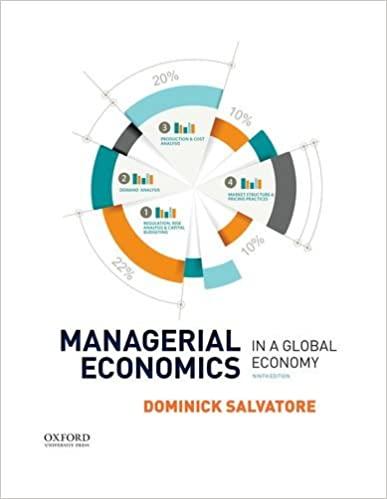Question
SIMULATION AND MODELLING: CAT ONE ( 1) How could random numbers that are uniform on the interval [ 0,1 ] be transformed into random numbers
SIMULATION AND MODELLING: CAT ONE
(1) How could random numbers that areuniform on the interval [0,1] be transformed into random numbers that are uniform on the interval [-11,17]?
(2) Use the linear congruential method togenerate a sequence of three two-digit random integers and corresponding random numbers. Let and .
(3) Use the multiplicative congruential method to generate a sequence of four three -digit random integers and corresponding random numbers. Let and .
(4) The sequence of numbers 0.54,0.73,0.98,0.11 and 0.68 has been generated. Use the Kolmogorov smirnov test with to learn whether the hypothesis that the numbers are uniformely distributed on the interval [0,1] can be rejected.
(5) Figure out whether these linear congruential generators can achieve a maximum period; also, state restrictions on to obtain this period.
(a)The mixed congruential method with a=2,814,749,767,109
C=59,482,661,568,307, .
(b)The multiplicative congruential generator with
(c)The mixed congruential generator with
(d)The multiplicative congruential generator with
.
(6) Test the following sequence of numbers for uniformity and independence :0.594,0.928,0.515,0.055,0.507,0.351,0.262,0.797,0.788,0.442,0.097,0.798,0.227,0.127,0.474,0.825,0.007,0.182,0.929,0.852.
(7) Lecuyer [1988] provides a generator that combines three multiplicative generators, with: a=157, m=32,363, , and .The period ofthis generator
Is approximately .Generate 5 random numbers with the combined generator, usingthe initial seeds:
and for the individual generators.
TOTAL: [70MKS]
Step by Step Solution
There are 3 Steps involved in it
Step: 1

Get Instant Access to Expert-Tailored Solutions
See step-by-step solutions with expert insights and AI powered tools for academic success
Step: 2

Step: 3

Ace Your Homework with AI
Get the answers you need in no time with our AI-driven, step-by-step assistance
Get Started


